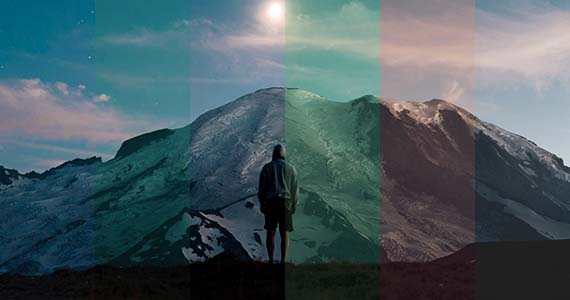
When it comes to capturing the allure of stunning landscapes, bustling cityscapes, or vibrant cultures, a picture is indeed worth a thousand words. And yet, the immense potential of a digitally captured image can only be fully harnessed through professional photo editing. Today, we delve into the world of color grading, a pivotal step in photo editing that can breathe life into your travel images.
Defining Color Grading
Color grading is an intricate process that involves adjusting the color tones and saturation levels in an image to reflect a specific mood or aesthetic. It is a tool wielded skillfully by photographers and videographers in genres ranging from travel, fashion, to film. Have you ever marveled at the dreamy hues of your favorite travel blogger’s photos or the gritty and raw vibes of a documentary? These are examples of the magic that color grading can work.
The Power of Grading in Travel Photography
Color grading can drastically alter the mood and message of your travel photographs. While the unedited photo may have recorded the reality of a place, color grading can bring out its true spirit. The neon-lit streets of Tokyo can appear even more electrifying under a cool, high contrast filter, while a warm and soft palette can amp up the romantic vibes of a Parisian café. As per a study in Visual Communication by Adams and Morioka (2014), “Selecting the right colors can reinforce a brand’s identity and strengthen its market position.”
The Steps to Stellar Graded Photos
Capture in RAW: In order to have the maximum amount of information to play with during the color grading process, professionals often shoot their photos in RAW format.
White Balance Correction: This process ensures neutral colors are correctly displayed in the image.
Correcting Exposure and Contrast: Here adjustments are made to the overall brightness and darkness of the image along with the balance of whites, grays, and blacks.
Color Saturation And Vibrance: This step intends to adjust the intensity of hues in the images.
Creating a Color Grade: Finally, using tools like Lightroom, Photoshop, or Capture One, you can introduce new color tones to your image to achieve the mood you’re after.
Each of these steps can transform a lackluster image into a vivid piece of storytelling, reflecting the ethos of the place you visited in a way that words could never encapsulate.
Addressing Concerns about Photo Editing
Despite its many advantages, some may argue that editing undermines photography’s credibility or authenticity. To address this, it’s essential to redefine the perception of professional photo editing. The purpose is not to create a deceptive representation of reality, but to highlight and emphasize the unique elements that make a scene memorable. As famous photographer Ansel Adams noted, “You don’t take a photograph, you make it.”
Conclusion
In this digital age where images can shape perceptions and inspire journeys, color grading and other editing techniques are invaluable. They do not warp reality but rather, allow us to present it more effectively. By mastering these techniques, you can epitomize your unique experiences and let your travel photographs narrate a captivating story of their own. Remember, professional photo editing is not a deceitful distortion, but a creative enhancement that elevates the art of photography to new heights.
The power of color grading: the image on the left is the original, while the image on the right has been skillfully color-graded.






More Stories
Demystifying the World of Car Insurance: Your Comprehensive Guide
Ways to Make the Most of Your London Trip
Cigar Lounges: The Social Aspect